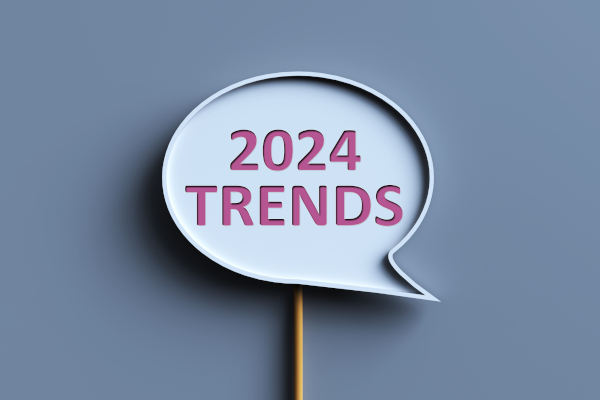Gartner Unveils Top Trends in Supply Chain Technology
From cybercrime to humanoid robots, discover what technology is shaping the future of supply chains in 2024
Gartner unveiled its eight strategic supply chain technology trends for 2024, covering everything from cybercrime to sustainablity.
Two broad themes emerged from the list: the need for supply chain leaders to leverage emerging technologies to control and protect their businesses; and new opportunities for competitive advantage through the integration of humans and machines.
RELATED STORIES: ASCM Releases Top 10 Supply Chain Trends for 2024 | Investments in Supply Chain Technology Paying Off | Wendy’s To Test Drone Delivery in First U.S. Location
“This year’s trends are driven by themes that encourage supply chain technology leaders to ensure their foundation can support both past and future investments, while also looking ahead for new differentiation opportunities,” said Christian Titze, VP analyst in Gartner’s Supply Chain Practice. “AI variants continue to be both a driver of trends, such as in robotics, and a trend itself, this year represented by ‘Composite AI.'”
The eight trends
- Cyber extortion: With cybercriminals leveraging AI, tech and IT leaders need to double down on security by making sure ransomware attack scenarios are part of the corporate risk management processes, alongside a detailed ransomware incident response playbook.
- Supply chain data governance The importance of maintaining a high data quality and strict governance processes has become mission-critical due to the emergence of powerful tools for advanced analytics and AI techniques.
- End-to-end sustainable supply chains: As sustainability shifts from voluntary to mandatory, companies must adjust their supply chains accordingly. A good example of this is Nike's recent partnership with CMA CGM to reduce its CO2 emissions.
- AI-enabled vision systems: Hyper-automation solutions that integrate industrial 3D cameras, computer vision software, and advanced AI-pattern recognition technologies to capture, interpret, and make inferences from unstructured images the vision systems see in real time.
- Augmented connected workforce: A reduction in the time required for an employee to achieve full productivity and improve their decision-making.
- Composite AI: Combining multiple AI techniques can improve the efficiency and accuracy of learning, providing a more sensible approach than relying on a one-size-fits-all strategy.
- Next-generation humanoid working robots: These robots combine sensory awareness with mobile manipulation and dynamic locomotion to perform productive work previously performed by humans.
- Machine customers: Non-human economic actors that autonomously obtain goods or services in exchange for payment. This includes intelligent replenishment algorithms that maintain availability of consumables; and intelligent assistants that suggest deals to consumers.
Article Topics
Gartner News & Resources
Gartner foresees sizeable uptake for next-gen humanoid robots Risk Management: Building resilient supply chains in a risky world Ranking the Top 10 Schools to Learn About Supply Chains Gartner Unveils Top Trends in Supply Chain Technology Major Shift Underway in Logistics KPI Reporting E-commerce Logistics: An endless array of challenges Supply Chain Management (SCM) applications keep the supply chain humming More GartnerLatest in Warehouse|DC
European Parliament Passes New Law Requiring Supply Chain Accountability Talking Supply Chain: Understanding the FTC’s ban on noncompetes North Carolina Welcomes Amazon’s Newest Mega-Warehouse SAP Unveils New AI-Driven Supply Chain Innovations U.S. Manufacturing is Growing but Employment Not Keeping Pace Maximize Warehouse Space with Mezzanine Automation: Expert Tips Most Companies Unprepared For Supply Chain Emergency More Warehouse|DC













